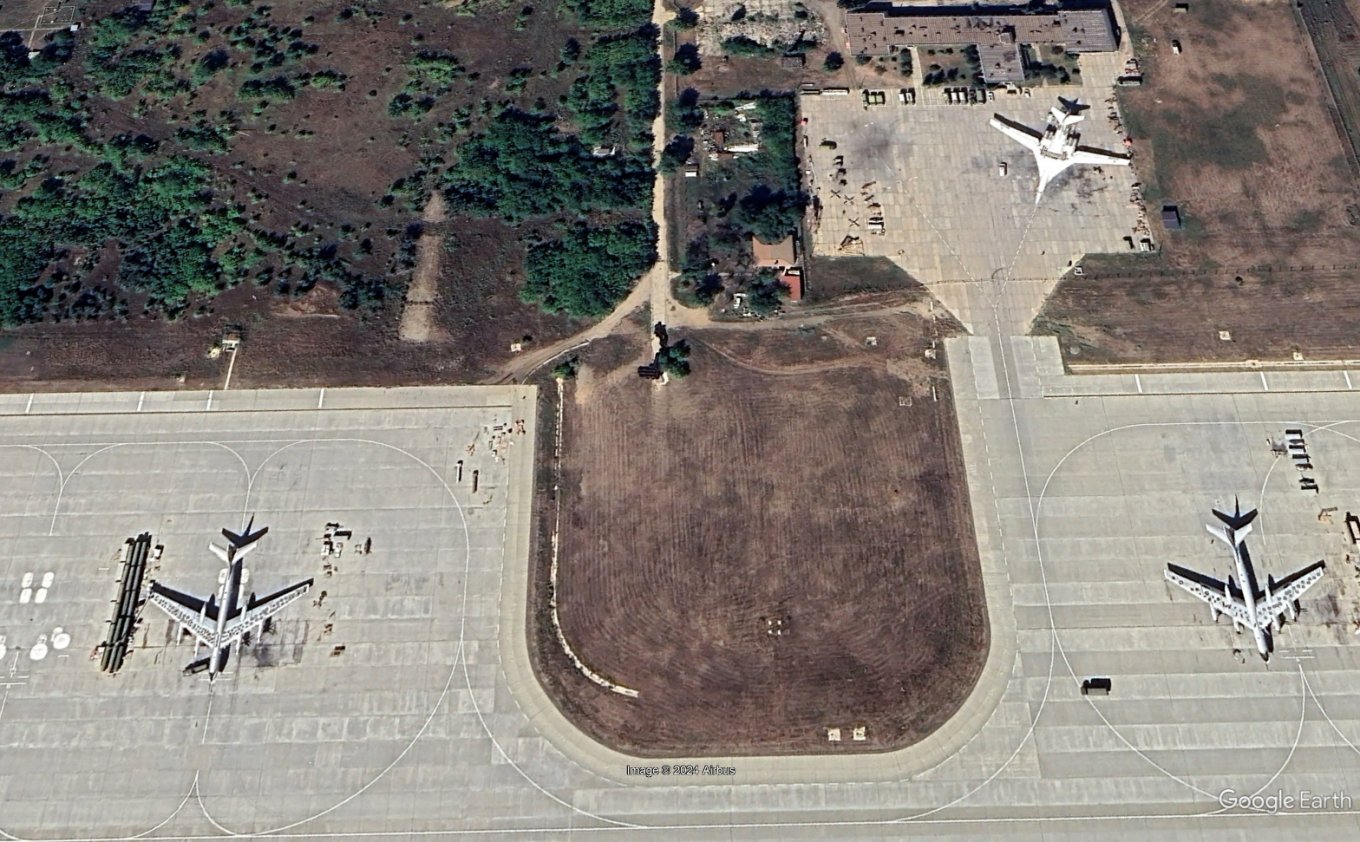Started in September 2023, the trend of the russian military to protect its strategic bomber aircraft by covering them in car tires is still relevant, although found much less popularity as a protective measure for tactical aviation, such as Su-34 frontline bombers.
For example, satellite imagery from August 2024, provided by Google Earth, reveals several Tu-95MS and Tu-160 strategic bombers coated in tires at the Engels airbase.
Read more: What's the U.S.-Provided Data So Essential For Unrestricted Storm Shadow Strikes on russia

Similar tire coatings were also spotted at the Olenya air base just a month ago.

Moreover, the tires are present on top of drawings of aircraft, too — another questionable tactic earlier observed on russian military airfields. Many experts tried to explain the logic behind those actions, one suggestion was that it helped conceal the aircraft's infrared signature to avoid being targeted by Ukrainian heat-seeking missiles, provided a certain degree of physical protection, or broke the airplanes' silhouette in the optical spectrum.
A recent statement by Schuyler Moore, U.S. Central Command’s Chief Technology Officer, has breathed new life into the discussion. As quoted by The War Zone, putting tires on the plane's fuselage and wings should prevent missile guidance technologies powered by artificial intelligence (AI) from recognizing the target:
A "sort of classic unclassified example that exists is like a picture of a plane from the top, and you’re looking foar a plane, and then if you put tires on top of the wings, all of a sudden, a lot of computer vision models have difficulty identifying that that’s a plane," Moore said during a panel discussion on AI, as delivered by TZW.
The painted airplane silhouettes serve a similar purpose, luring smart seekers away from real aircraft. To make things less obvious, the drawings were covered in tires as well.

The Pentagon official didn't specify exactly what kind of AI "vision" is meant in this context but the journalists hint that it's a countermeasure primarily against infrared imaging sensors, aka heat seekers, as they are employed by Ukraine's Storm Shadow/SCALP and, reportedly, Neptune cruise missiles.
The guidance system, integrated into these weapons, uses passive homing based on comparing what they see below to the target's reference image, found in the pre-installed data bank. This type of guidance is activated in the final — terminal — phase of the missile's flight.

Schuyler Moore says it takes six months to find a way to teach the missile to recognize the planes disguised under tires, and it's not so efficient because the russians, for example, could easily remove the tires and apply a different method to break the silhouette and deceive the missile seeker.
Though Defense Express would like to add that neural networks are all about cumulative knowledge and learning, which means the smart missile can get to an understanding rather quickly if deliberately trained with the russian patterns. Yes, it doesn't solve the issue in the long run but can facilitate achieving the objective: taking down the russian strategic aircraft while on the ground.
Besides, Ukraine has proven it possible. Although the exact mechanisms remain secret, Ukrainian explosive long-range drones with so-called "machine vision," also based on elements of AI, managed to reach and successfully strike Tu-22M3 strategic bombers at the Olenya air base. Notably, these drones employed airburst detonation mode, significantly scaling up the damage inflicted on the valuable russian aircraft. Evidently, all the Tu-22M3s at Olenya were covered in tires at the time.

That said, the reason why russians put tires even on aircraft stationed at their far-rear airfields remains a mystery. Particularly, Tu-95MS bombers were seen in this characteristic rubber protection at the Ukrainka air base, about 6 thousand kilometers from Ukraine where no drone can reach, as far as known.

Read more: The Ultimate Advantage of Ukrainian Long-Range Kamikaze Drones Revealed: New-Gen DSMAC Guidance Like in Cruise Missiles














